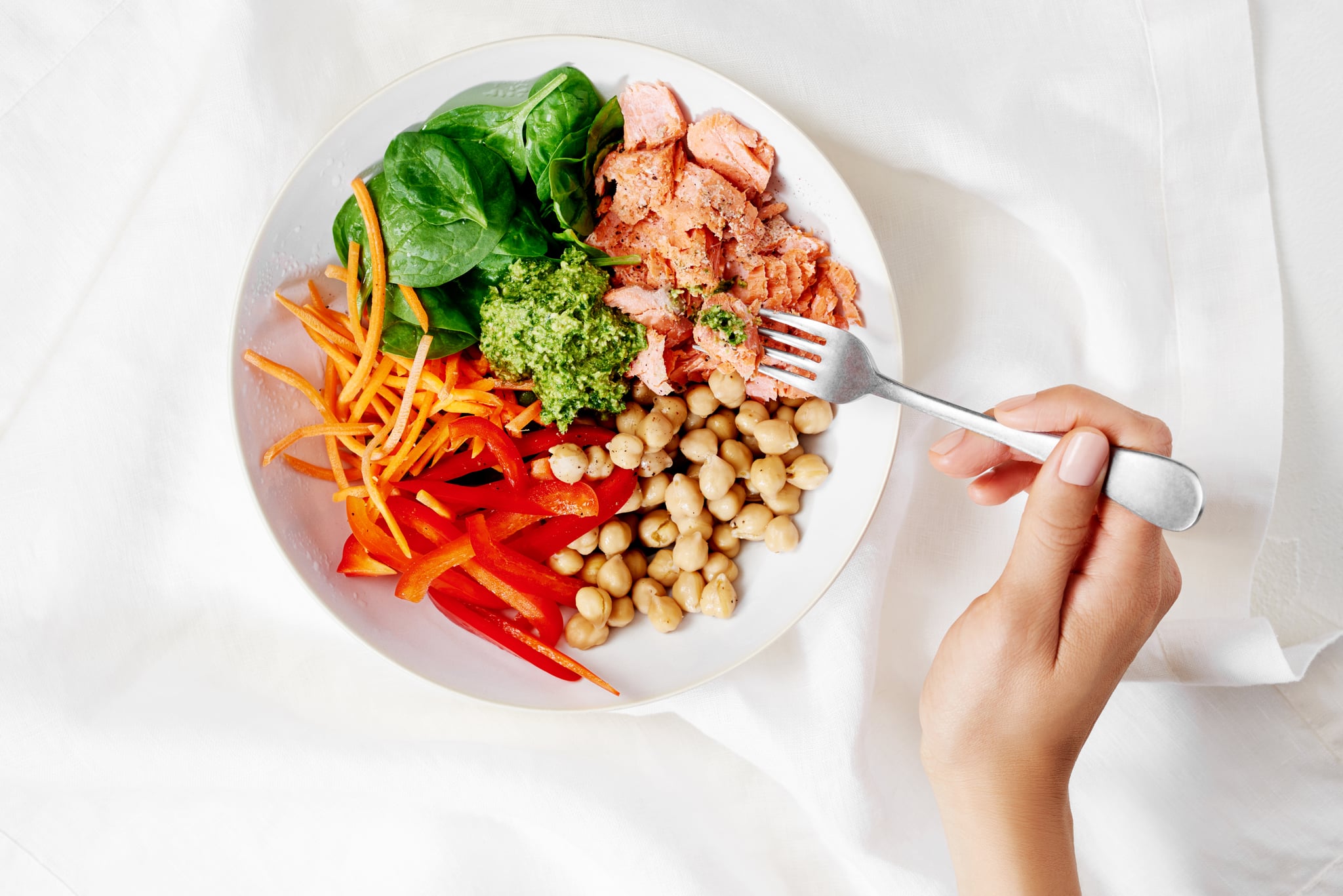

There's no skirting counting calories when you're trying to lose weight, but if you choose to go low-carb, you'll need to calculate your macros, too. If you're unfamiliar, macronutrients are the carbs, fats, and proteins that make up the calorie content of your food. For obvious reasons, they become more important when you're following a plan that requires you to limit one of those pillars.
While everyone is different, and you should consider working with a dietitian to establish some goals, most low-carb diets limit carbohydrates to roughly 25 percent of your calories, explained Annie Reed, a registered dietitian in Greenville, SC. (She noted that this can range from 15 to 35 percent, depending on a number of factors, including your activity level. "The body's preferred energy source is carbohydrates, so restricting carbohydrates too much can be unhealthy and difficult to maintain over a long period of time," Annie told POPSUGAR.) You'll get the rest of your calories from fat and protein: 40 percent and 35 percent, respectively.
Once you've determined how many calories you'll need to eat to lose weight (this formula will help you find your sweet spot), you can simply use these percentages to calculate the breakdown for each nutrient, where 1 gram of carbs or protein is equal to four calories and 1 gram of fat is equal to nine calories. So, if you're eating 1,500 calories per day, 375 should come from carbs, 600 from fat, and 525 from protein. That translates to 94 grams of carbs, 67 grams of fat, and 131 grams of protein.
Finally, remember that the quality of the foods you eat matters just as much as the quantity. Fill your plate with healthy fats (like avocados and nut butter) and lean sources of protein (poultry, tofu, beans), while limiting your intake of refined carbs and added sugars. "Instead of excessively restricting carbs, it's best to focus on eating healthy sources of carbohydrates like whole grains, sweet potatoes, and fruit, and limiting the sugar-laden carbohydrates, like juice, sodas, candy, and processed sweets," Annie said.

0 comments :
Post a Comment